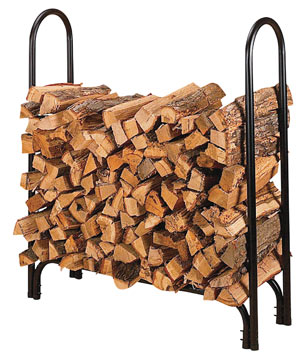HY-C has been warming American homes since 1947, but import competition almost extinguished its fire.
The HY-C Company has faced numerous threats and challenges in its nearly 70-year history. But this one was different.

HY-C, which manufactures chimney covers, log racks, fireplace accessories, animal control screens and other hearth-related products in a factory spanning an entire city block just north of downtown St. Louis, with storage and other facilities in a warehouse in south St. Louis, was founded in 1947 by then-roofing salesman Alan Hisey (pronounced Hy-see.)
Making his rounds, Hisey heard incessant homeowner complaints about chimneys falling apart, being invaded by birds and raccoons or filled with debris when the wind blew. Why didn’t someone do something about protecting them?
 A HY-C copper chimney cover.
A HY-C copper chimney cover.
Hisey sensed opportunity, and the solution came to him quickly: a chimney cap. Such a cap or covering would keep rain and snow, yard debris, critters and downdrafts blowing hot ashes and cold air out and dangerous sparks in. It would make a chimney more efficient, increasing its longevity. And it could be made of aluminum, which was lightweight and impervious to rust. While previously an expensive alloy, due to wartime production, aluminum was much cheaper in 1947.
Hisey made the first covers in his garage. He had another Eureka! moment when a store owner suggested boxing them and selling them on his shelves. HY-C began manufacturing and selling the caps first across the St. Louis metro area, then the Midwest, then the entire country.
HY-C continued to make and sell several models of aluminum chimney covers until the 1980s, when the market began changing. Consumers were tired of aluminum and wanted something more substantial. In response, the company began manufacturing black-painted, galvanized and even stainless steel covers.
Over time, several items were added to the HY-C product line, but the company manufactured just one thing: chimney covers.
Business began slowing again in the late 1990s, so HY-C management diversified into other product lines: first tubular log racks; then stoveboards, essentially insulated boards that sit under a stove to insulate and protect the floor; then, at the turn of the century, cast iron fireplace grates, andirons, steamer kettles and other accessories. In 2011, the firm again struck out into new territory, adding wood-burning add-on furnaces. HY-C seemed set to warm American homes and hearts for years to come.
But the intervening recession and increasing foreign competition, especially from flimsy Chinese and Mexican products, were dampening sales. So the firm reached out to Becky Nace, assistant director, Mid-America TAAC in early 2011.
“We were facing considerable pressure from overseas competition,” says David Walters, executive vice president, resulting in both slumping sales and employee reductions. “Becky came over and met with us, did a study to determine if we were impacted by competition and if we qualified for the program.”
 HY-C steel log racks keep firewood dry.
HY-C steel log racks keep firewood dry.
The company did, and together the team identified essential software and marketing upgrades, including the firm’s website. The website featured a long list of products alongside a cartoon of a disgruntled, 1950s-era homeowner sitting on his roof protecting his chimney with an umbrella.
“And that’s okay,” says Walters. “Fifteen years ago, that is. We needed more than an online product catalog.” An effective website must look, feel and act more contemporary, with better brand representation, secure ordering and other features which customers today take for granted. And the firm, with TAAF funds, made that happen.
Good old-fashioned customer service and prompt delivery have also helped HY-C differentiate itself from its competition. The firm is small and agile enough to turn around a custom order in 36 hours, about as fast as having a product delivered from a warehouse shelf. Ordering, double-checking specs then waiting for the product to roll off a ship from Shanghai takes considerably longer.
Since entering the TAAF program about a year and a half ago, Walters estimates HY-C has probably added about $3 million in sales and 10 employees, bringing the total to about $12 million and 65 individuals. “And we now have a solid foundation for additional growth, thanks to the program and Becky,” he says. “From our perspective, it’s hard to find a program targeting exactly what’s needed in terms of required changes to update, upgrade our ability to compete on the global playing field. You hear about all kinds of government programs, and frankly they seem like a stretch in terms of accomplishing the goal. TAAF was dead on in terms of what needed doing, and Becky has been exceptionally good to work with — very detail-oriented, very much has the attitude of doing what needs to be done. She is a true partner in our success.”